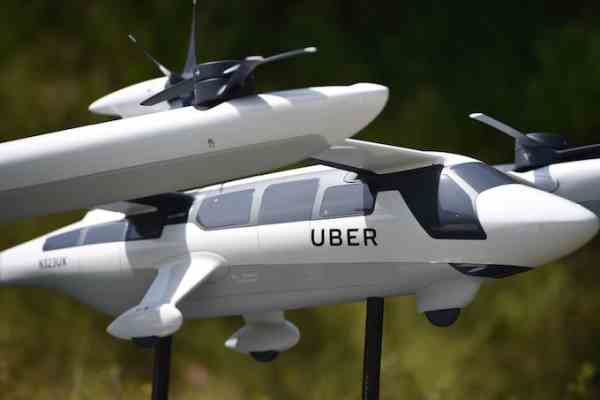Published on the 28/06/2018 | Written by Pat Pilcher

It’s still up in the air, but the future could have wings, says Uber…
Speculation is rife that Auckland, Melbourne or Sydney could be among the first in the world to get Uber Air, an airborne version of the popular ridesharing service, Uber.
Uber has confirmed they are considering all three cities as the third city to trial Uber Air in 2020. Uber also said it could launch commercially in 2023.
Dallas and Los Angeles were recently confirmed as test sites for for the service, with Uber looking for an international location to round out the test sites. Dubai is also being considered.
So how do the Australasian candidates stack up?
Uber’s head of products Nikhil Goel said Sydney and Melbourne are being considered on the basis of several factors, including their size, population density and traffic problems. “Both cities are set to double in the next 30 years,” Goel said. “And in congestion costs, both Sydneysiders and Melbournites spend a massive amount of time [in traffic] across the year.”
Goel said Auckland’s rapid growth and traffic congestion also made it a potential test location.
Uber Air will use electric drone-like aircraft that can seat four passengers and a pilot. The aircraft are expected to cost around US$2-3 million and will be jointly manufactured by Boeing, Embraer, Bell, Pipistrel Aircraft and Karem Aircraft.
Uber Air, which is still very much in start-up mode, has met with government and aviation officials to discuss their plans.
Uber has indicated that they will look to develop “sky-ports” – landing/take-off pads on top of buildings and close to transport hubs. The company said that they will be looking for building owners and developers keen to invest their own money in return for a share of Uber Air revenues.
And while it’s not the only company looking at air-based taxi services here, it perhaps is the first to paint a complete picture of what a Jetson’s world would look like, with several architectural designs part of the media package promoting the idea.
In Auckland’s case, Uber has acknowledged that the city’s small size compared to Sydney, Melbourne and Dubai, may hinder its chances of becoming a trial city. But population aside, there are other considerations. These include a favourable regulatory environment, which Uber’s Goel said is a crucial consideration. Prevailing wind and rain conditions might also play a part.
Goel said discussions with Kiwi regulator watchdogs had been positive and noted that “Regulators here in New Zealand start with ‘yes’. They want to know how they can help make this a reality and how they can help,” Goel said. He said this will play a big part in which city gets chosen as the third test site. “We want to work with partners who equally want to work with us and that I think is going to be the ‘number one’ criteria for our selection.”
Assuming Uber Air does trial and eventually launch in this part of the world, will it take off?
Given Uber’s record for exploiting drivers, safety concerns are likely to exist around overworked and underpaid Uber Air pilots.
Reports of Uber drivers on both sides of the Tasman working long hours yet earning less than the minimal wage are perennial features in the Australasian media landscape.
A report recently released by Australia’s Centre for Future Work said Uber’s sharply priced fares were only possible because of how little they paid their drivers.
The report found that Uber drivers earned A$18 an hour, on average, compared to Australia’s minimum wage of A$18.29 an hour. As self-employed contractors, 25 percent of passenger fares goes to Uber, while drivers still must cover tax, ACC, insurance, petrol costs and maintenance.
Another issue for Uber Air could be pricing. In May, at the Uber Elevate conference in Los Angeles, Uber indicated that the passenger cost per mile needs to be competitive with car based transport.
According to the American Automobile Association, car ownership per mile costs between $US0.464 to US$0.608. Even with the use of electric aircraft to cut fuel costs, Uber Air prices are likely to be steep. Uber indicated at the conference that initial Uber Air charges would be an estimated US$5.73 per passenger mile which could be a show stopper for wide uptake in the price-sensitive New Zealand market.
Longer term, Uber say they are confident prices will come down to US$1.86 per passenger mile and that this would drop to US$0.44 per passenger mile, making Uber Air cheaper to use than an old-school cab.




























